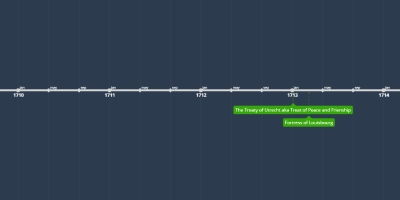4 janv. 1775 - American Revolution
Description:
Loyalists = a person living in the Thirteen Colonies who remained loyal to Britain.
Patriot = a person living in the Thirteen Colonies who supported the rebellion against Britain.
In 1758, the British government began posting ads in New England to target Planters to come to North America's Atlantic coast. There were tensions about taxation - Boston Tea Party.
The American Revolution began in 1775, the American Revolution began. Battles raged throughout the Thirteen Colonies for 6 years, until the Patriots won. In 1783, the war officially ended with the Treaty of Paris, in which the British gave up control of the Thirteen Colonies to the Patriots. This is how the United States became an independent country and the land north of the US became known as British North America.
Loyalists were invited to find safety in British North America. They were offered free land, tools, and seed to grow crops. 50,000 Loyalists out of 70,000 came. 25,000 went to Nova Scotia. There were 3000 Black Loyalists who moved to Nova Scotia.
The American Revolution separated the Haudenosaunee Six Nations. Some sided with the British and some sided with the Patriots.
Now that the British had control over the Maritimes, they wanted to establish more peaceful relationships with the First Nations. Peace and Friendship treaties were signed.
The massive growth in growth in the Loyalist population was overwhelming. The Loyalists began taking over First Nations lands for themselves. The Loyalist migration was one of the causes of the Mi'kmaq population decline. They were starving (Nelson 7 History, p. 121). The Loyalists also moved into Quebec area. Tensions increased. Loyalists wanted a more British way of life. The Canadiens petitioned for their own elected assembly. To keep the peace, the British government established new Loyalist settlements beyond the Ottawa Valley. This caused the created of Upper and Lower Canada. The British majority in Upper Canada were able to have Protestant churches and schools, British law, and could own land. The Canadiens in Lower Canada were able to keep their language, religion, and seigneurial land-use practice.
Ajouté au bande de temps:

Grade 7 version 2
Date:
Les images:
![]()
